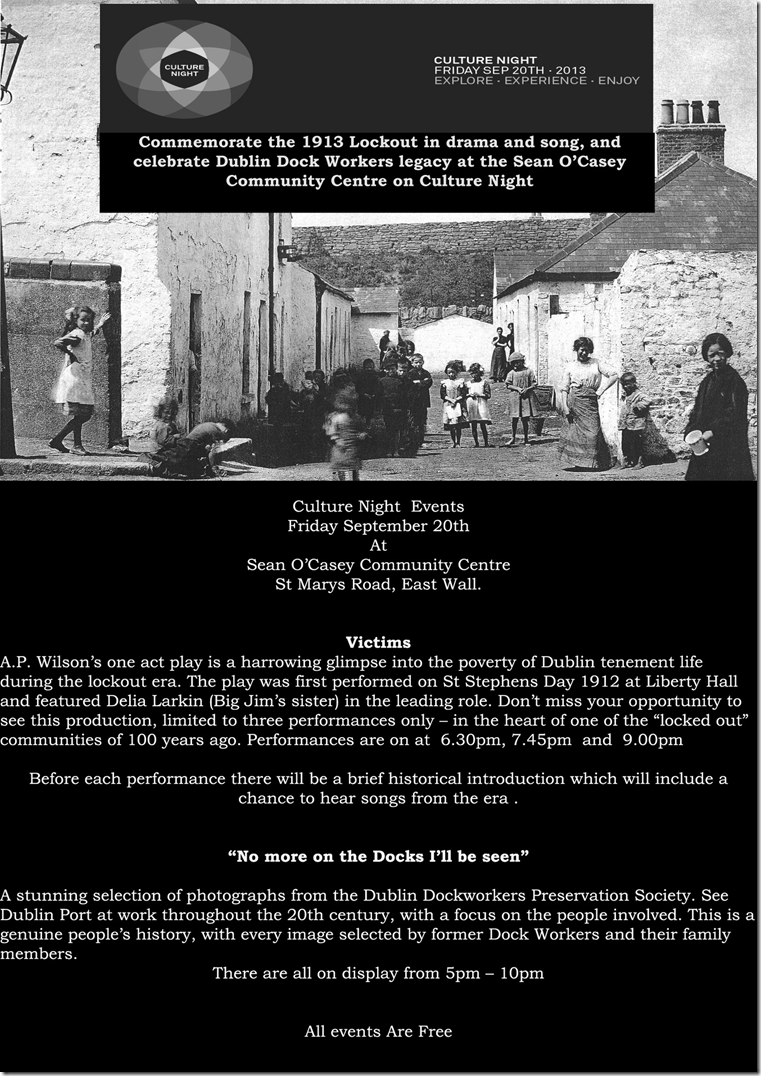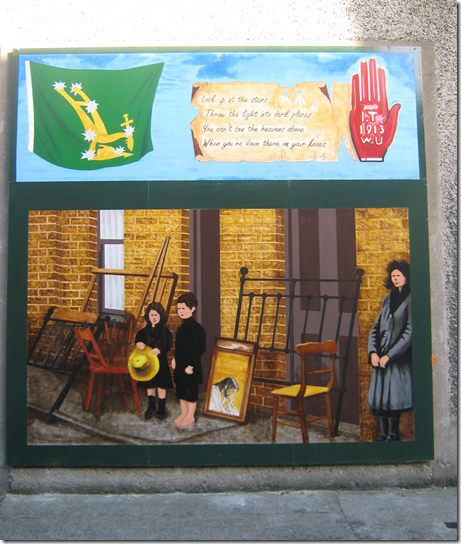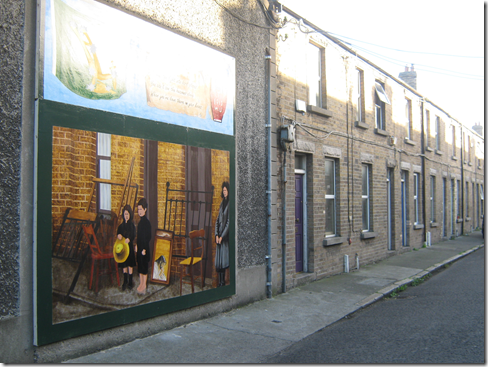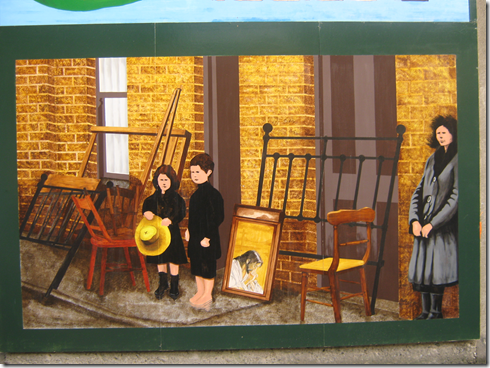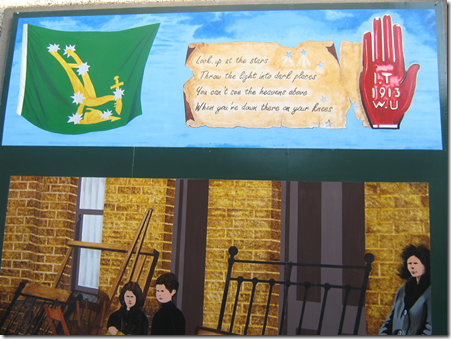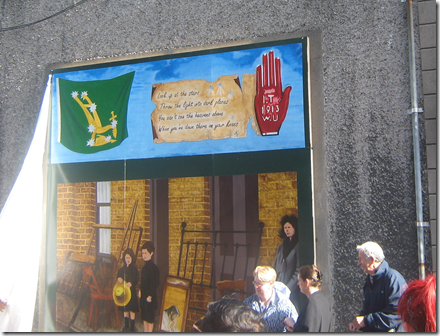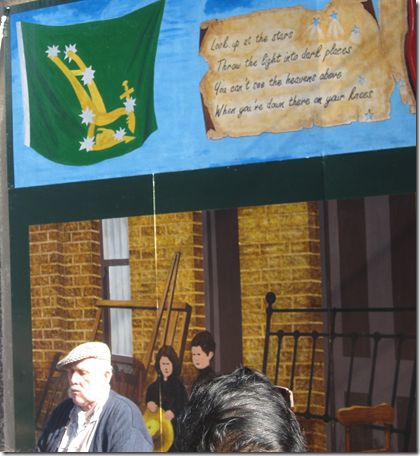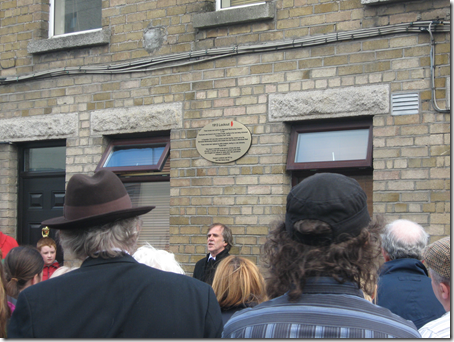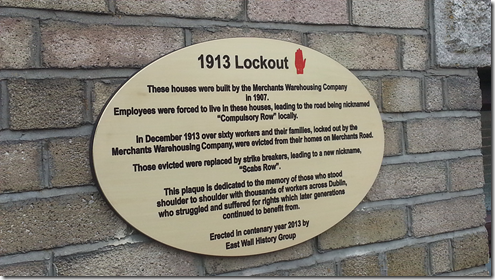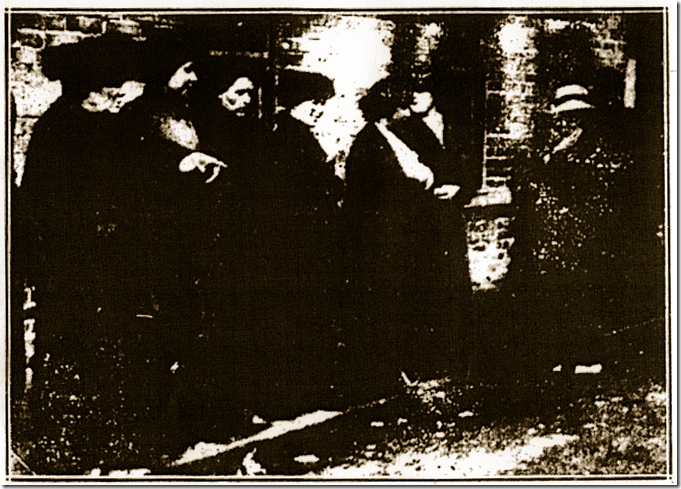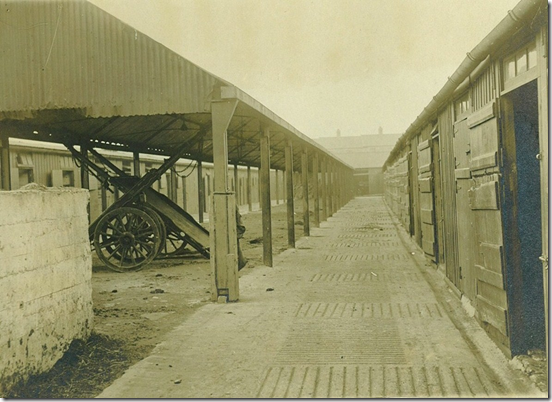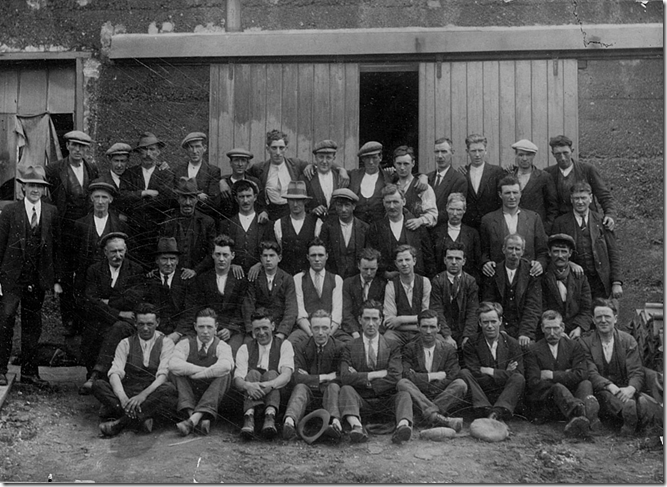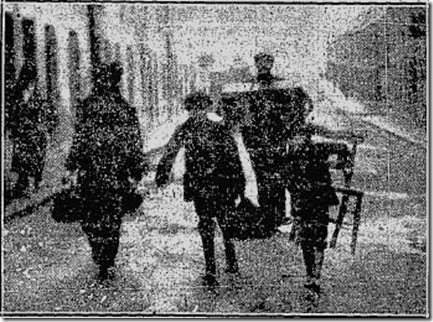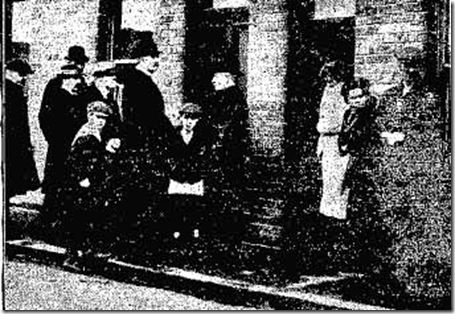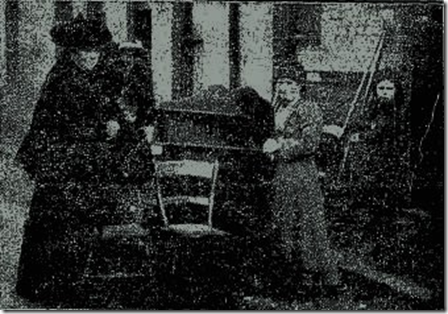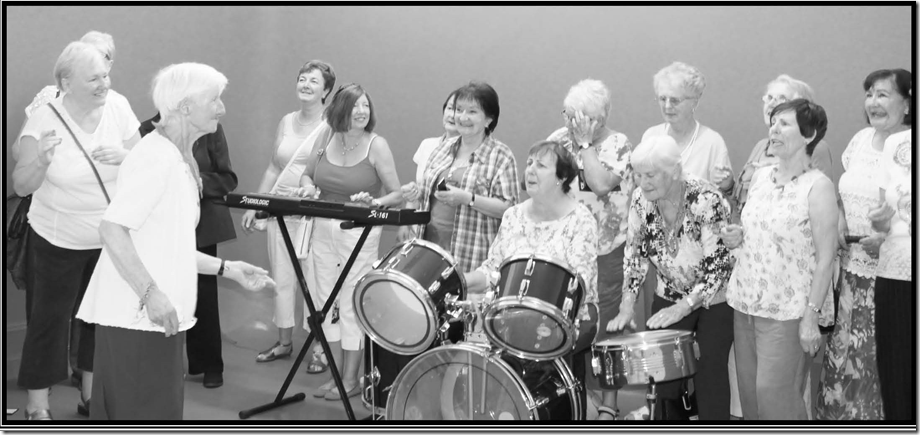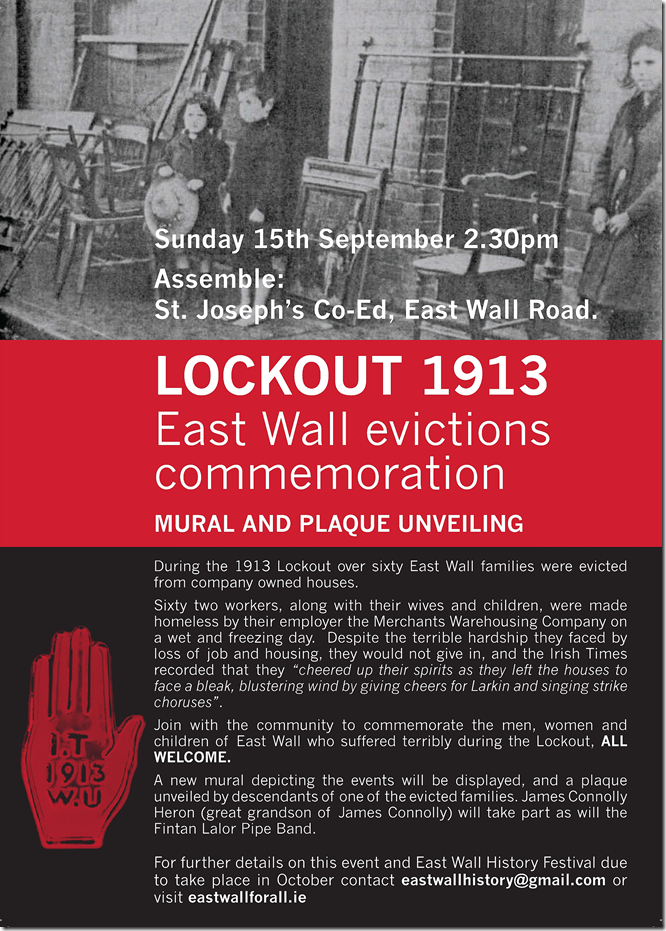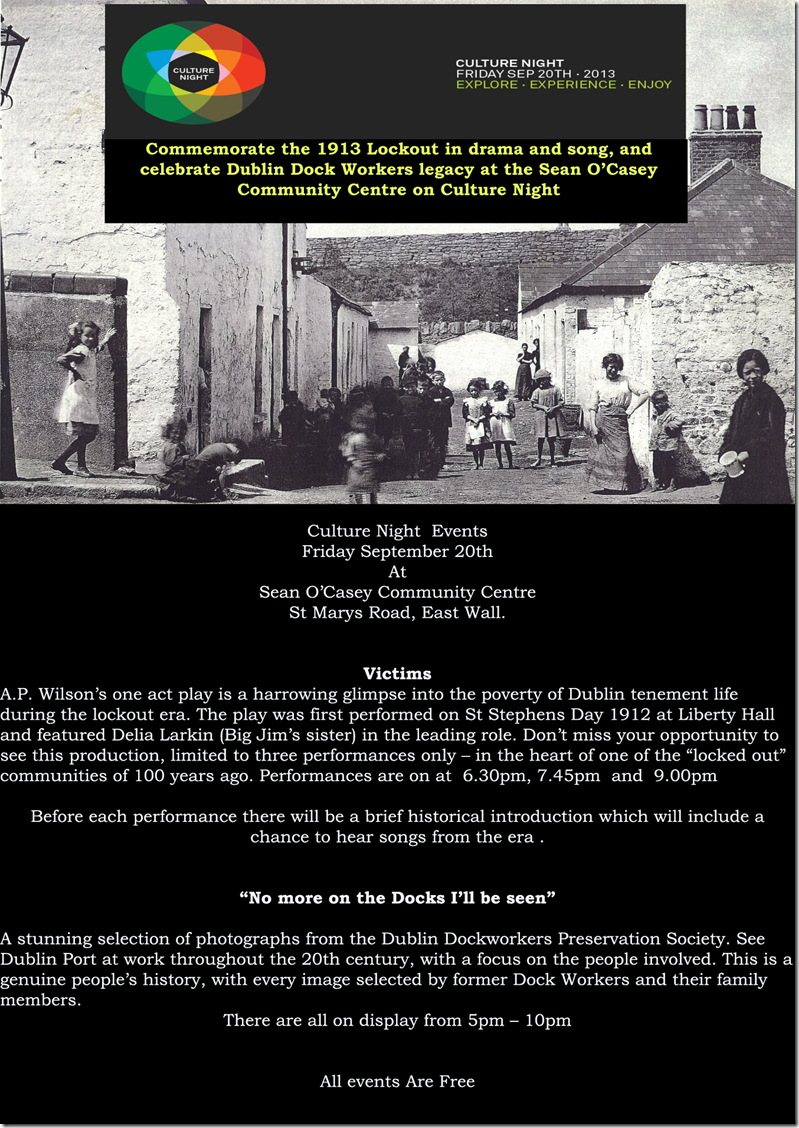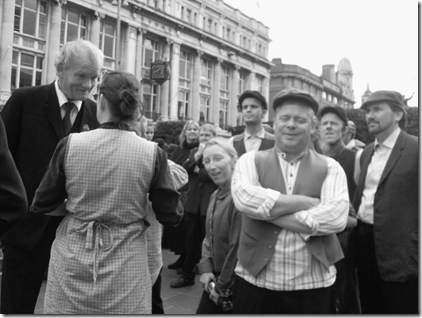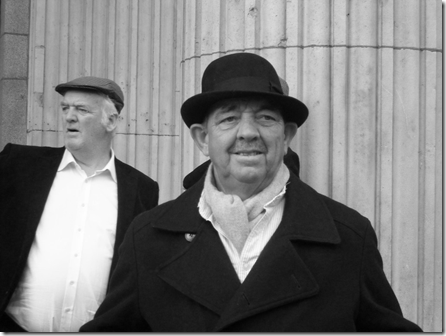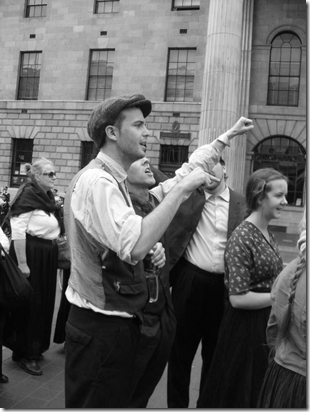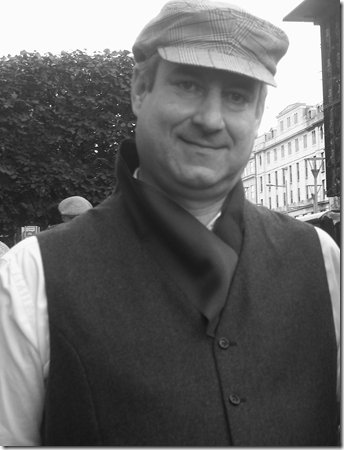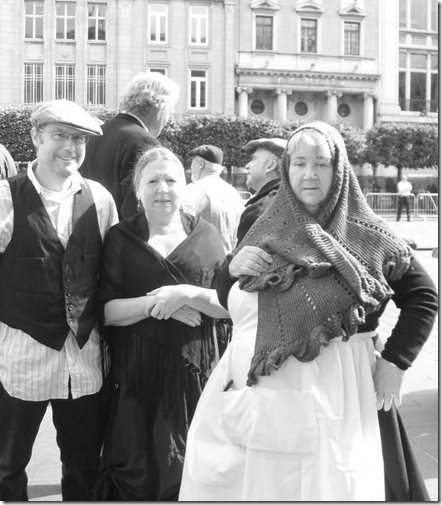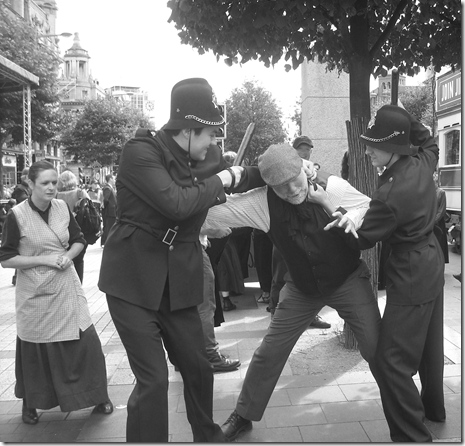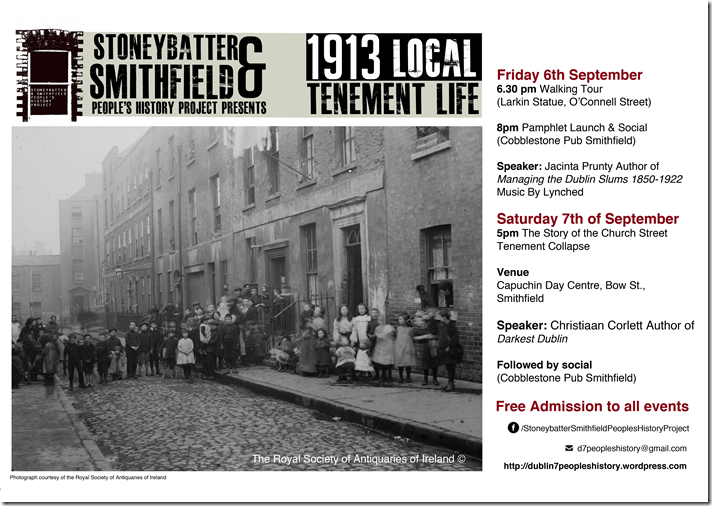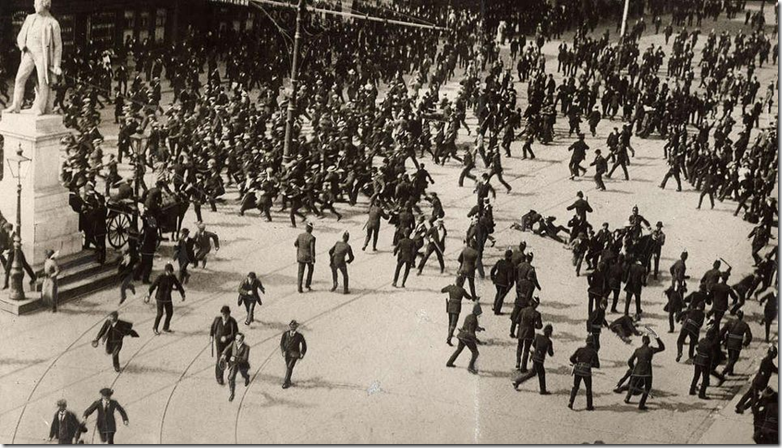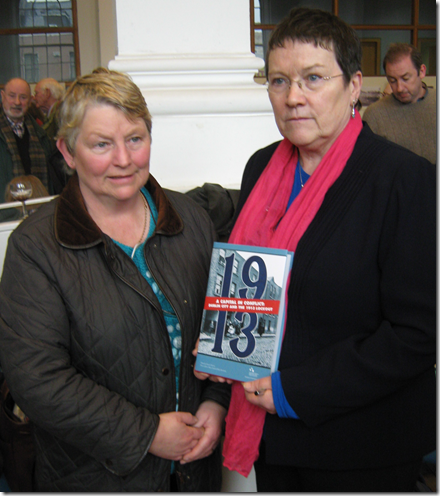Sep 15
1913 Merchants Road Evictions commemorated
A wonderful commemoration event to mark the Merchants Road evictions took place this past weekend. In 1913 over sixty workers and their family members were evicted by their employer, the Merchants Warehousing Company during the Lockout. In this centenary year we remember them, and have commemorated these people and their sacrifice and courage. Here are some images from the weekend event, a more complete selection and a full video will be available shortly.
While these images show the wonderful quality of Arthur Kavanaghs artwork on the mural, make sure you come down Merchants Road and see the real thing, as well as the plaque near the top of the road. Pictures also show descendants of the evictees unveiling mural, Tommy Seery singing ‘The Bold Labour Men’ and James Connolly Heron participating in the event.
Sep 09
1913 Lockout Merchants Road Evictions Images may fade, but our memories should not
During the 1913 Lockout over sixty East Wall families were evicted by the Merchants Warehousing Company. The photograph above is a particularly haunting image, showing an evicted family carrying their possessions along Merchants Road. The other two photographs, while not as poignant, also illustrate the events of that day. The first shows bailiffs gathered at a door about to serve an ejectment notice on a family, while the second is evicted residents with their furniture placed in front of their former home.
Baliffs
The quality of these images is poor; however, as no other copies are currently available to us we feel that they are of such historical importance that they should be published.
Images can fade, but memories should not. Next Sunday,15th September a commemorative event to remember the families evicted during the 1913 Lockout is taking place – an impressive new mural depicting an eviction scene along with a plaque on the Merchants houses will be unveiled.
Family furniture
It will be a very busy afternoon – Relatives of some of those evicted will be taking part , James Connolly’s great grandson will read a report written by Connolly two days after the event , and and the Fintan Lalor Pipe band (historically associated with the Lockout and the Irish Citizen Army) will be represented.
The newspapers of the day commented on the defiance of those evicted, recording that “the women and children hurrahed and cheered for Larkin and the Transport Union.” In memory of this, cast members from “The Risen People” (from the PEG Drama and Variety Group) will sing strike songs outside the very same houses.
Afterwards refreshments will be served, and there will be a small photographic exhibition, including some new and rarely seen material. There will also be an opportunity to hear the story of Daniel and Bernard Courtney, evicted residents who went on to participate in the 1916 Rising.
Sunday 15th September
Assemble: St. Josephs Co-Ed School, East Wall Road, 2.30pm
For further information contact: eastwallhistory@gmail.com
Note: Eviction images courtesy Hugo McGuiness, original source: The Freemans Journal.
Sep 07
Nascadh community newsletter September 2013
The latest newsletter from the Nascadh Community Development Project is now available. Featuring a roundup of reports and images from the various summer projects in the area you are sure to see yourself, your family or neighbours having fun together.
Also featuring details of a proposed ‘Men’s Shed’ project and the Information services available in the area. The newsletter is available at key locations throughout the community, or can be downloaded in full below.
CLICK ON THE LINK TO OPEN IT NASCADH AUGUST SEPT 2013 NEWSLETTER
Nascadh Community Development Project can be contacted at nascadhcdp@eircom.net
Sep 04
Culture Night 20th September 2013 Join us at the Sean O’Casey Community Centre
All welcome to free events at the Sean O’Casey Community Centre, East Wall to celebrate aspects of our city’s vibrant working Class culture. Organised in conjunction with the East Wall History Group and the Dublin Dockworkers Preservation Society this is an evening not to be missed.
A special event is also scheduled as part of a weekend of activity, details to be available shortly. Watch this space, and we hope to see you there.
Contact: eastwallhistory@gmail.com
Sep 01
Bloody Sunday 1913 recreated “…and a belt of a baton from the DMP”
On 31st August 2013, on the anniversary of the infamous baton charge on O’Connell Street the scene was re-created. The community of East Wall, including relatives of those involved in the Lockout a century ago, took part in the re-enactment. Cast members from “The Risen People” and other locals joined with the Dockworkers Preservation Society, the North Inner City Heritage Group and many more volunteers to cheer on Larkin, Boo Murphy and take a beating from the police.
A children’s street rhyme from the era went like this:
“Come on along come on along
And join Jim Larkin’s Union
You’ll get a loaf of bread and a pound of tea
And a belt of a baton from the D.M.P.”
‘Risen people’ from East Wall , North Wall and North Strand patiently await the batons.
And the baton charge begins.
“LET US ARISE”
One hundred years after the Lockout it is important that we remember the heroic working class of Dublin. It was their struggle and their sacrifice that led to many of the rights and standards of living that we now take for granted. It was most appropriate that the re-enactment included not only descendants of those involved in 1913 , but also featured many of us who are still active in our own City and local areas – standing together and working for the betterment of our community .
Photos courtesy Sarah Lundberg, East Wall History Group.
Contact eastwallhistory@gmail.com
On Sunday the 15th September the Community of East Wall will be commemorating the 62 local families evicted during the Lockout. Please join us, assembling at St. Josephs School 2.30 pm, all welcome.
And this week, our friends in the Stoneybatter and Smithfield People’s History Project are holding events to mark the 100th anniversary of the Church Street disaster. On 2nd September 1913, barely a week into the Lockout and with the city still reeling from Bloody Sunday a horrific tenement collapse left seven people dead. All are welcome to attend the commemorative events .
Aug 31
Bloody Sunday 1913 Patrick Lennon , East Waller, is ‘bloodied but unbowed’.
On this date, 31st August, one hundred years ago Irelands first ‘Bloody Sunday’ occurred. The image of the baton charge on O’Connell Street is one of the most famous Irish photos of the 20th century. An attack by the Dublin Metropolitan Police (DMP) and Royal Irish Constabulary (RIC) saw hundreds of citizens injured as trade unionists, the curious and innocent passersby alike were beaten indiscriminately.
The previous evening baton charges had also taken place at Liberty Hall, along the quays and onto Abbey Street. Police also rampaged through working class housing in Corporation buildings, smashing up furniture and possessions and assaulting residents.
One newspaper report stated that at Jervis Street hospital “some three hundred persons had been treated at the hospital during the twenty-four hours commencing at 8 o’clock on Saturday night till that hour on Sunday evening, for injuries they had received in the disturbances that had taken place in the city.”
One of those injured was Patrick Lennon, with an address at 14 Irvine Crescent, Church Road. We have no exact details of his wounds, but it is fair to say that he was ‘bloodied but unbowed’, as he went on to play a significant role during the Lockout. It is this role, rather than ‘a belt of a baton from the DMP’ which he deserves to be remembered for.
Patrick Lennon is pictured above outside Liberty Hall, sitting beside Delia Larkin. Patrick, an ITGWU member, was secretary of the “Women and children’s (of Locked out workers) Relief fund” set up initially to provide clothes and shoes. He ran the committee from his home at Irvine Crescent. Its role later expanded to include the provision of food, providing nourishment for hundreds of children. Sean O’Casey (formerly of Hawthorn Terrace and by now living at 18 Abercorn Road) became assistant secretary to Patrick. An office was set up at Liberty Hall, and more importantly so was a kitchen, breakfast room and clothing room. Delia Larkin and Grace Neal were centrally involved. While the role and operation of the committee was to change through the course of the strike, it was consistent in providing for the most vulnerable victims of the Lockout.
The photo above shows East Wall For All chairperson Marie O’Reilly with author and Historian Ann Matthews at launch of “A capital in conflict: Dublin City and the 1913 Lockout”. The book is a collection of fascinating essays by various contributors, including Ann. Her essay looks at how women and children survived the hardship of this time, and includes information on the ‘penny dinners’ at St Laurence O’Tooles and on the work of Patrick Lennon , and is well worth reading.
If anyone has any further information on Patrick Lennon or other local residents involved in the events of the 1913 Lockout please contact us at eastwallhistory@gmail.com


